Are you wondering how to set up Google Analytics social media tracking? Using Google Analytics for social media tracking is really the best way to see how many visits you’re getting from social media, plus what those visitors are doing on your site once they arrive. Are your social media marketing efforts paying off?
If you want to track your social media traffic with Google Analytics, including the number of conversions those visitors trigger, you’re in the right place.
In this article, I’ll discuss the benefits of tracking paid and organic social media traffic with Google Analytics, take a look at a quick easy tracking tip for WordPress users, then dive into a tutorial.
Let’s get started.
Video Walkthrough
Why You Need to Analyze Social Media Traffic in GA4
If your business or brand has a presence on social media networks, it really pays off to set up Google Analytics social media tracking. Here are a few reasons why it’s so important to monitor your social media traffic:
- You can identify which social media platforms are sending traffic to your site and which ones aren’t doing as well.
- You can figure out how engaged your social media visitors are by analyzing the time their engagement with your site. This data helps you determine whether you’re targeting the right audience with your social media marketing campaigns. If visitors are landing on your site and leaving quickly without completing any events or conversions, there must be something you can improve.
- Looking at your new vs. returning visitor rates from social media platforms can tell you a lot about how well you’re building a loyal audience. If you notice that most of your social media traffic is from new visitors, with very few people returning to your site, it might be time to adjust your social strategy to encourage more repeat visits.
- You can monitor how many conversions your social media audience is making. Are visitors from social media filling out your forms? Making a purchase? Completing any downloads? Watching a video at least halfway on your landing page? These are important questions to answer about your social traffic using a conversions report.
Google Analytics Social Media Tracking Tutorial
Ready to track your social media traffic with Google Analytics? Follow this step-by-step tutorial to set up all the Google Analytics reports you need to track your social media traffic.
Note for WordPress users: You can see social media traffic right in your WordPress dashboard with MonsterInsights! Skip to the MonsterInsights instructions.
Step 1: Create Custom URLs for Google Analytics Social Media Tracking
Before I explain how to find your social media traffic in Google Analytics, did you know that referrals from some social media platforms can be miscategorized as direct traffic?
It’s true! Social media traffic isn’t always categorized as social media traffic. So, I highly advise using UTM parameters on every single URL you share on social media. That includes links in your bios and any you share on your page or feed.
Not only does this ensure that your traffic will be categorized correctly, but it also helps you see which posts are sending the traffic (because you won’t see that information in Google Analytics either). So, any time you’re going to share a link, open up a campaign URL builder tool, use the social media platform’s name (all lowercase) as the source, referral as your medium, and something that will help you identify the post or bio in the campaign tag. You can use the content tag, too, if you’d like.
When you’re done, it’ll look something like this:
https://www.yourdomainhere.com?utm_source=tiktok&utm_medium=referral&utm_campaign=tiktok_bio_linkHere’s an example that uses the utm_content tag to describe which post on Facebook was shared:
https://www.yourdomainhere.com?utm_source=facebook&utm_medium=referral&utm_campaign=spring_sale&utm_content=blue_bg_promoThis will help your reporting immensely!
WordPress users can find a UTM builder right in their dashboard with MonsterInsights:
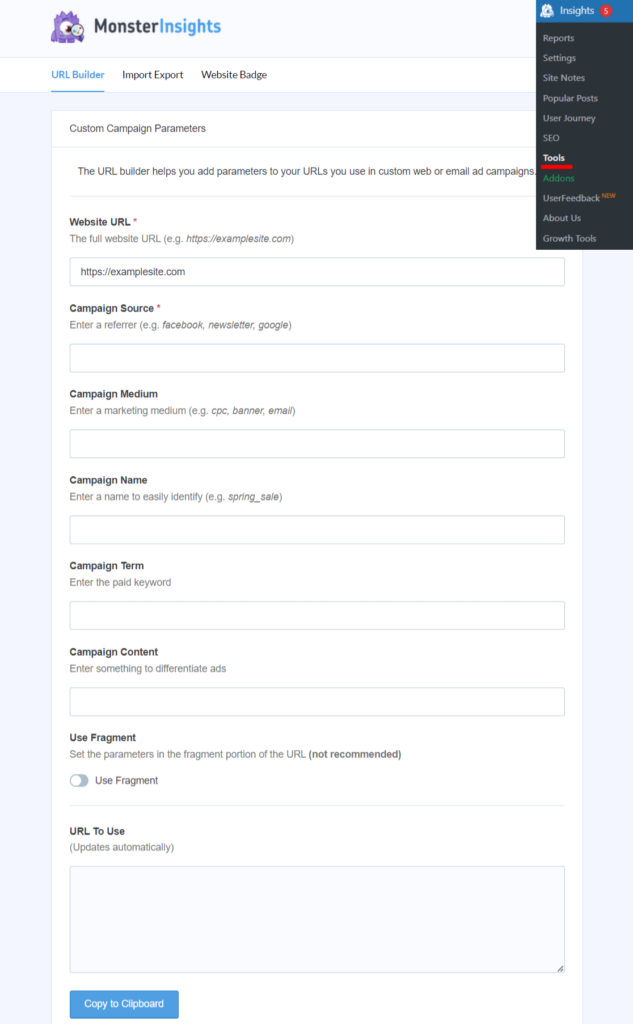
Finding the concept of UTM parameters a little bit hard to grasp? Check out this tutorial: A Beginners Guide to UTM Parameters (And How to Use Them)
Step 2: View the Traffic Acquisition Report
In Google Analytics 4, navigate to Reports » Acquisition » Traffic Acquisition.
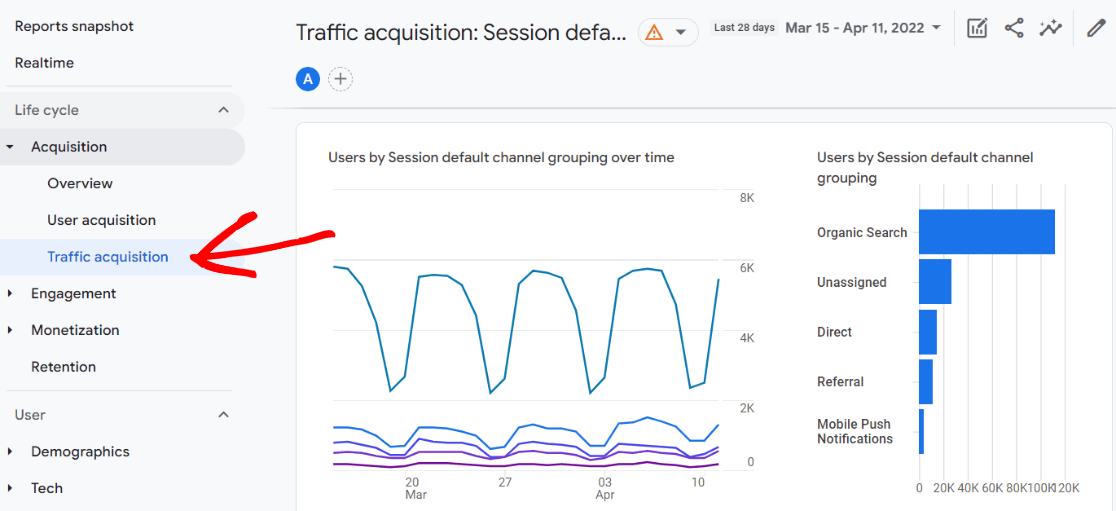
Then, scroll down the page to find the table. If you have social traffic, you’ll find Organic Social, Paid Social, or both of those channels in this table, depending on what social media campaigns you’re running. Please note that you may have to add more rows to the page by clicking the dropdown if you don’t see your social traffic:
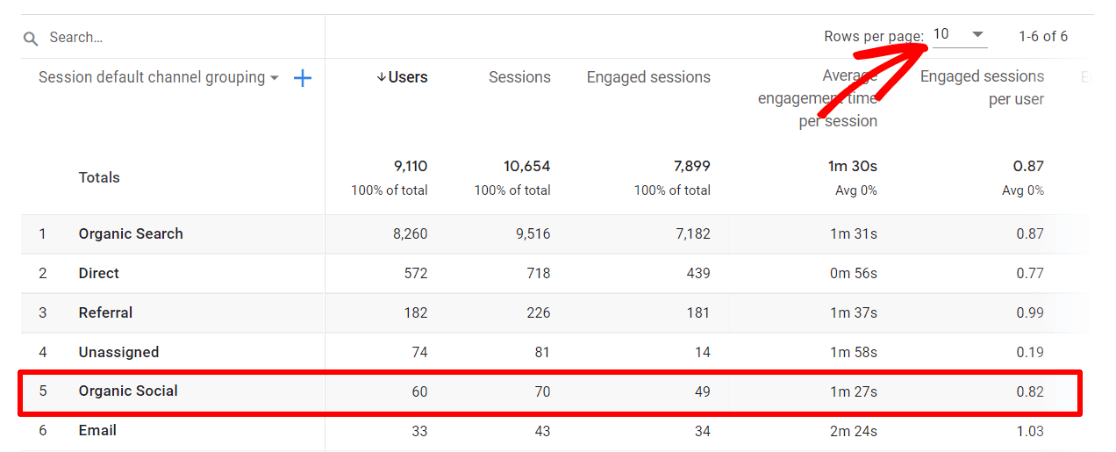
This report tells you about your organic social media traffic altogether. So, you can see in general how your social media traffic is doing: how many users were referred to your site, how many pages they looked at, how long they stayed on your site, how many conversions they completed, and more.
While the traffic acquisition report is helpful as-is, you might want to see more information here, like what pages the traffic landed on, what specific social platform visitors came from, or whatever helpful data nugget is going to be the most impactful for your business.
That’s where a secondary dimension comes in! To add one to your report, click on the blue plus sign on the top left of the table. I’ll use source/medium as an example, so in the dropdown, select Traffic source » Session source/medium:
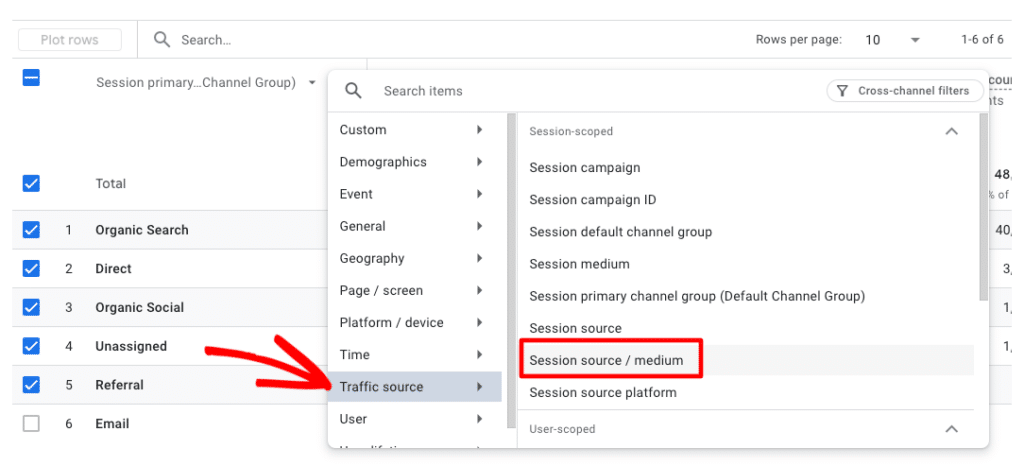
Then, type “social” into the search bar to isolate your social media referrals in the table:

To see the same report but with landing pages, remove the Session source/medium and add Landing page instead.
While this method of customizing the Acquisition report works well, there’s another way you can create a custom social media report. I’ll go over that option next!
Step 3: Create a Custom Explore Report
Want a snazzy custom explore report showing social media traffic that you can build once and then access again and again?
I’ll walk you through each step of creating one. If you haven’t built a custom explore report before, you might want to take a quick look at this handy guide on creating custom reports in GA4.
Now, follow these steps to create your custom social media report:
- Import the following Dimensions:
- Session source
- Session default channel grouping
- Landing page + query string
2. Import the following Metrics:
- Sessions
- Engaged sessions
- User engagement
- Engagement rate
- Key events (formerly called conversions)
- Purchases or Transactions if you run an eCommerce website
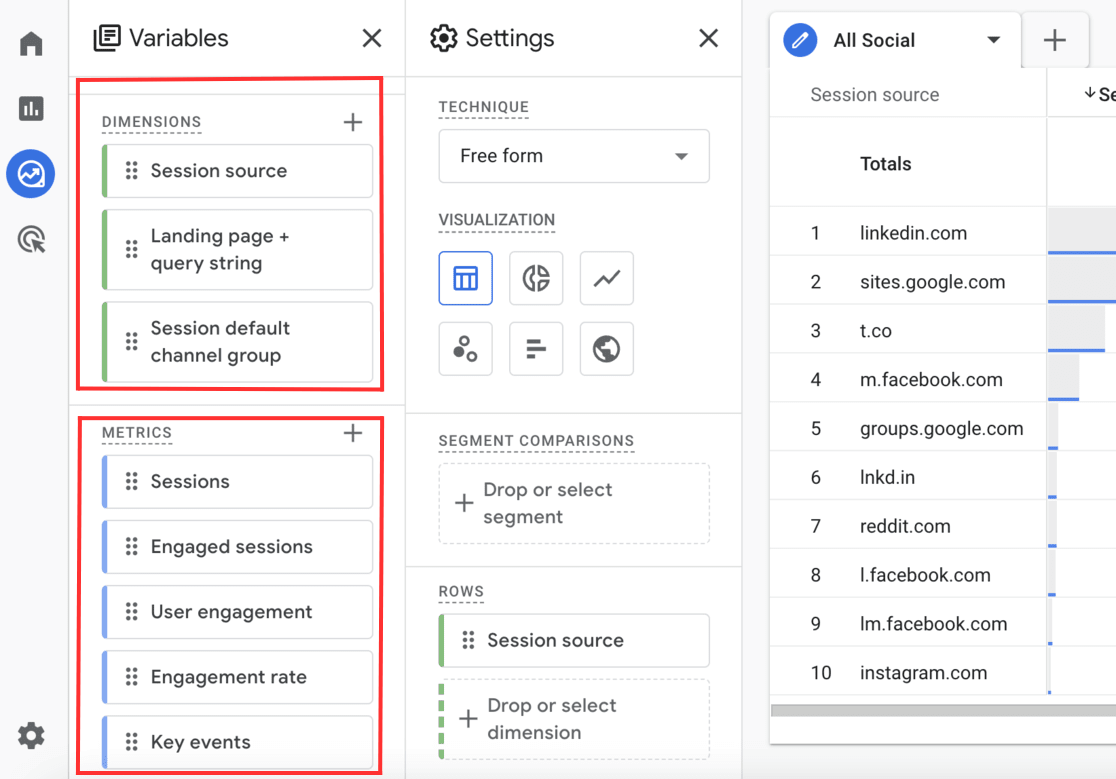
3. Click and drag Session source from your Dimensions into the Rows box.
4. Click and drag all five Metrics into the Values box.
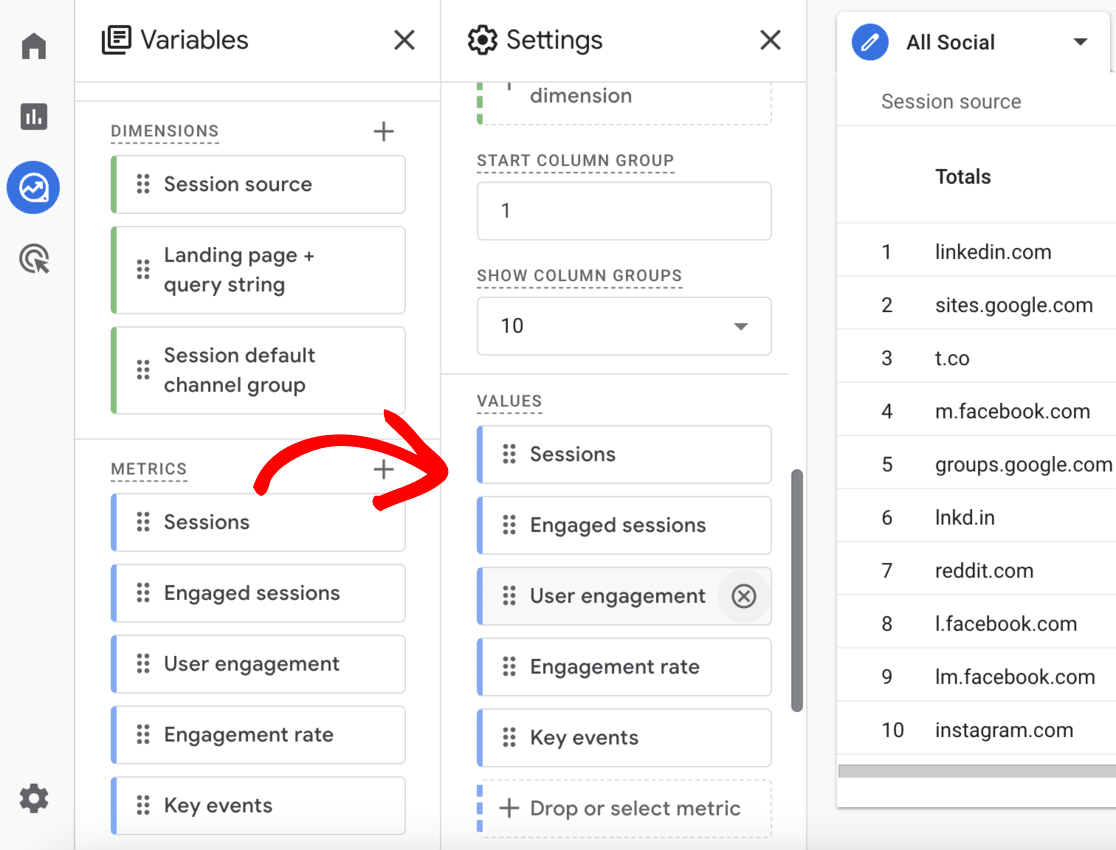
5. Click and drag Session default channel grouping from your Dimensions into the Filters box.
6. Configure your filter to exactly matches and type/choose Organic Social. Running paid social ads? Add a second tab to your report and make the same report, but make the filter exactly matches Paid Social.
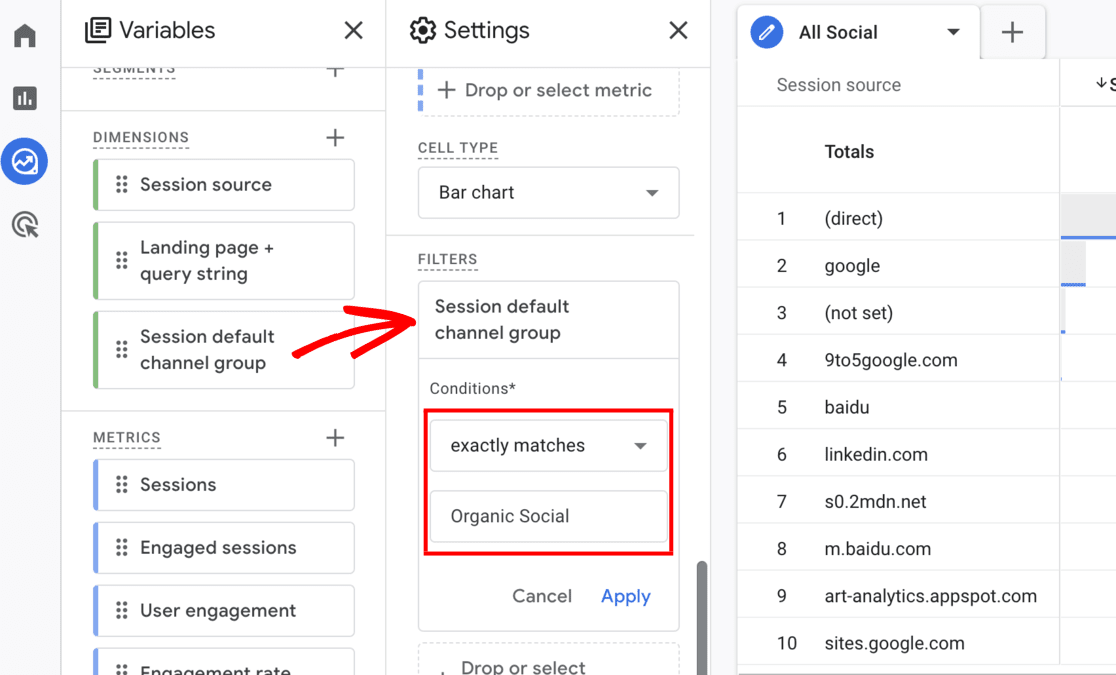
Now, you should have a social media channels report that looks like this:
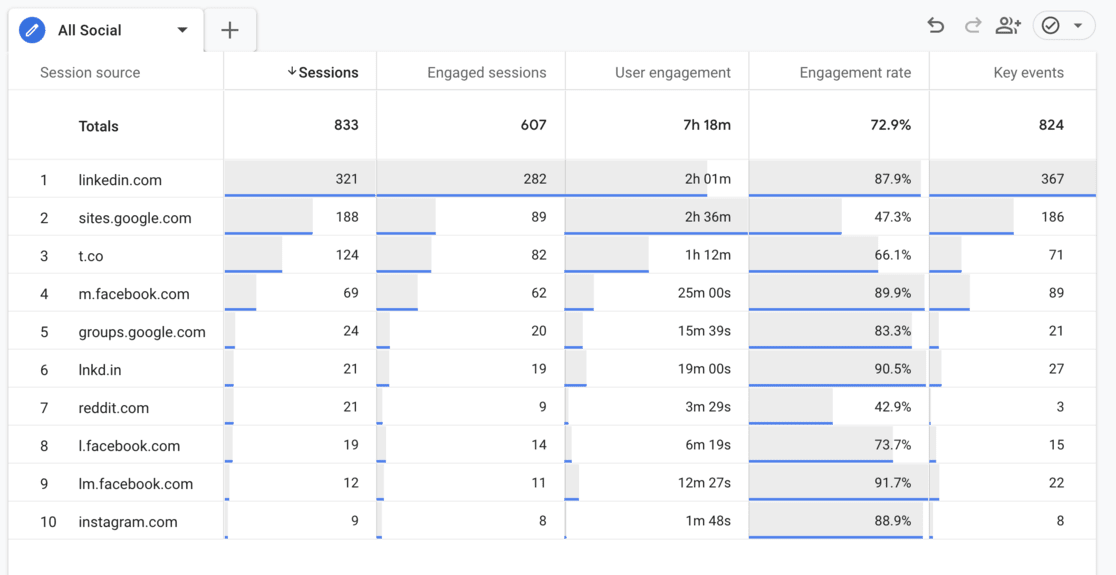
Want to view your social traffic by landing page instead of social network? Just swap out Session source for Landing page + query string in the Rows box.
Or, if you want to see new vs. established traffic, go ahead and add the New/established dimension to the report and drag it over into Rows. Change how many rows are in your report if you need more than 10:
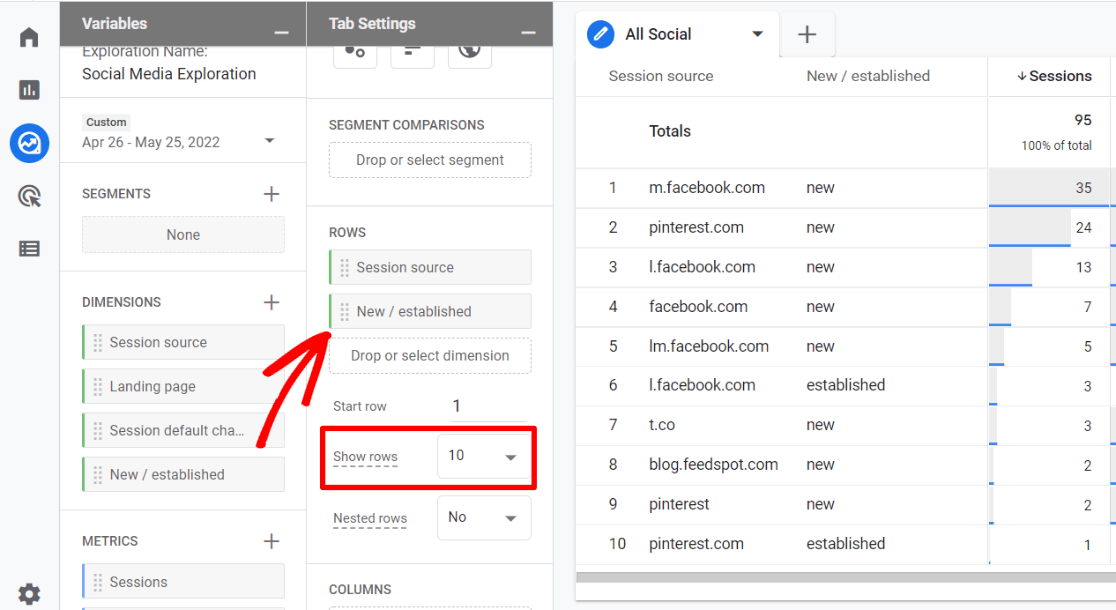
How to Track Social Media Visits in WordPress
Another way to monitor social media traffic if you’re using WordPress is with MonsterInsights.
MonsterInsights is the best Google Analytics plugin for WordPress. It allows you to easily connect your WordPress site with Google Analytics, so you can view all the data that matters most right in your WordPress dashboard.
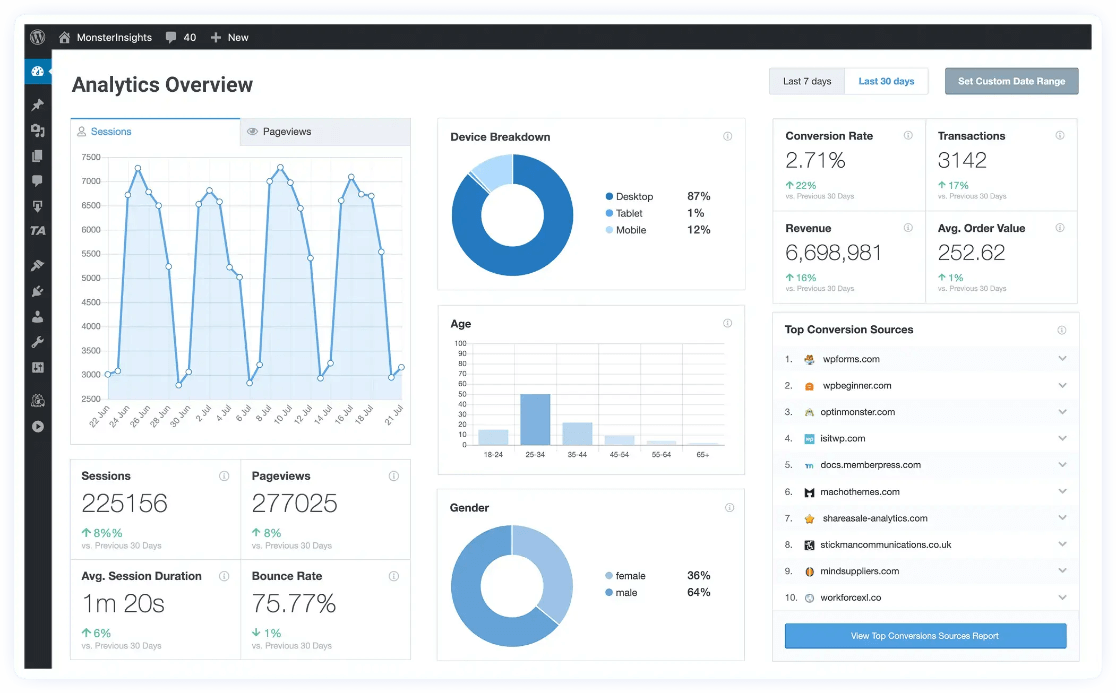
Plus, with the click of a button, you can set up sophisticated tracking features such as event tracking, author tracking, eCommerce tracking, form tracking, custom dimension tracking, outbound link tracking, and more.
With MonsterInsights, you’ll get several reports right inside your WordPress dashboard that include social media visits, so you can see that data at a glance.
The MonsterInsights Social Media Report
The main report you’ll want to look at regularly is the social media report. Just head to Insights » Traffic » Social to see how much social traffic you got, whether or not those visitors were engaged, how many purchases they made, and more.
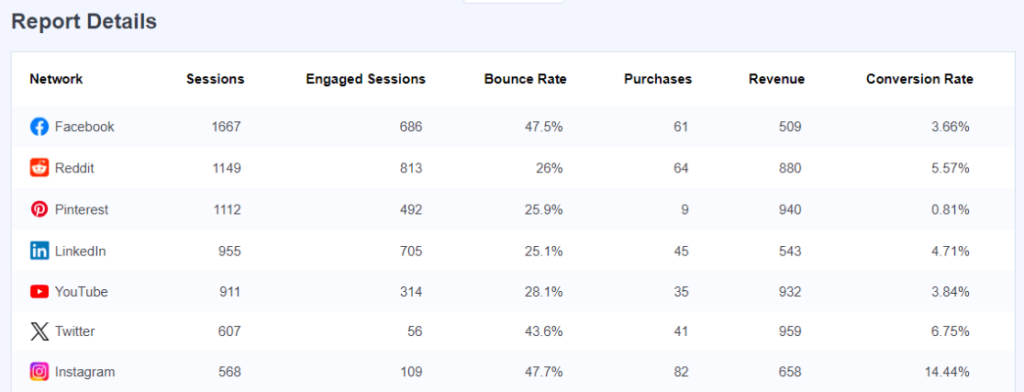
The MonsterInsights Referral Report
For quick social media monitoring, MonsterInsights includes a top referrals report right inside its Overview report. If you get a lot of social network referrals from different social media platforms, you’ll see them in your report.
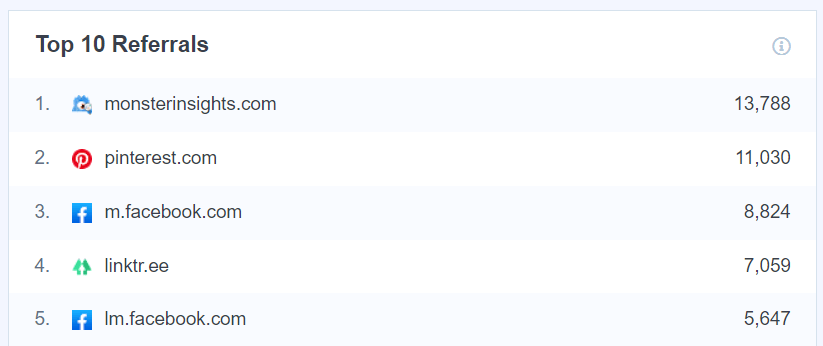
To see more of your referrals than the top 10, there’s a link at the bottom of the report that takes you straight to the exact report you need in your Google Analytics dashboard.
The MonsterInsights Source/Medium Report
You can also find your social media traffic inside the Source/Medium report. See specific social channels right in the report along with your other sources, and see if your social traffic brought in any revenue!
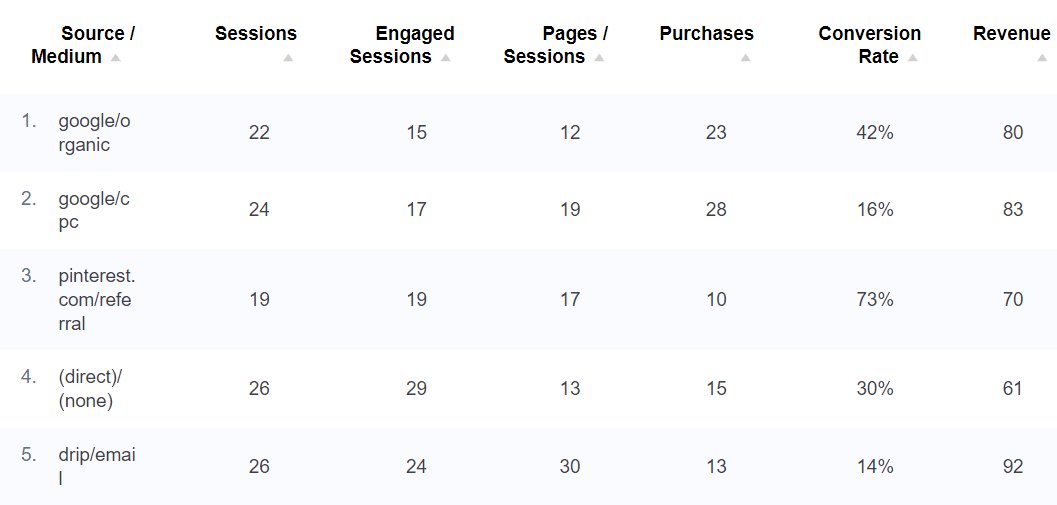
For more on using MonsterInsights in WordPress, read How to Add Google Analytics to WordPress the Right Way.
That’s it!
I hope this guide helped you learn how to track social media traffic and reach your social media goals with Google Analytics. If you liked this article, you might also want to check out:
9 Best Social Media Plugins for WordPress
8 Best Social Media Metrics to Track Now (+ Growth Tips)
How to Measure Social Media ROI With Google Analytics
Not using MonsterInsights yet? What are you waiting for?
Finally, don’t forget to follow us on YouTube for more helpful Google Analytics tips.
Google Analytics for Social Media FAQ
Have some questions about Google Analytics and social media? Here are some answers.
What is Google Analytics social media tracking?
Google Analytics social media tracking allows you to measure traffic, user behavior, and conversions originating from social platforms. It identifies key metrics like referral sources, engagement rates, and campaign performance, enabling optimization of your social media strategy.
Does Google Analytics track social media?
Yes! However, Universal Analytics had a whole report section devoted to social media tracking, and Google Analytics 4 does not. That doesn’t mean it’s not available – it just means you have to create the reports yourself, which we’ll cover in our tutorial.
What is Organic Social in Google Analytics 4?
Google Analytics 4 breaks down social media traffic by organic and paid. Visits through regular posts and profile links will be categorized in the Organic Social channel, whereas visits from paid social media ads will be categorized in Paid Social.
Can you use Google Analytics for Facebook?
Yes, Google Analytics will track your website traffic that’s referred from Facebook. For information about installing a Meta pixel on your website, check out How to Add a Facebook Pixel to WordPress (Easiest Way).
Running Facebook Ads? Check out How to Track Meta (Facebook) Ads in Google Analytics.
Can I use Google Analytics for Instagram?
Yes. The trick for Instagram is using custom campaign URLs.
